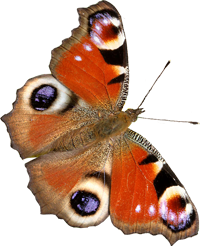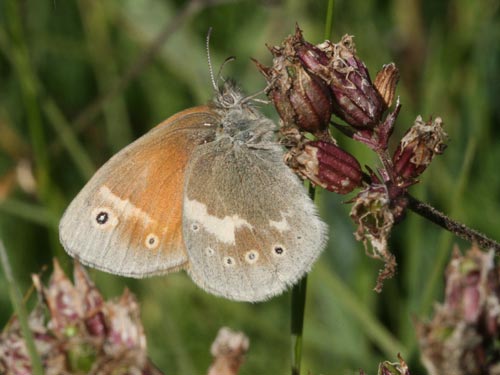
Jura, France, July 2008
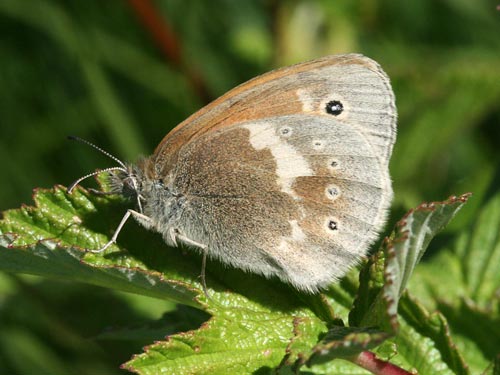
Jura, France, July 2008
Field notes and information
A specialist of bogs and wet heathland. It is sporadic across much of northern and central Europe, absent from large areas where suitable habitat isn't found. Generally very local, can be common.
Identification & Similar species: Size is a major feature separating this species from similar ones. However, size is never definitive so the following features are necessary to be sure of identification.
One of few species of this genus lacking a yellow, silver or orange submarginal band on the hindwing. The ground colour on the hindwing extends to the submarginal area, in contrast to the smaller small heath C. pamphilus which becomes paler in the post discal area. That species also lacks a white or pale cream discal streak on the underside forewing and the spots on the underside hindwing are usually present, very small and ringed brown with tiny white pupils, never with any black.
In southeast Europe, and also on Mte Baldo in north Italy, the eastern large heath C. rhodopensis replaces this species. This has yellow ringed black spots on the underside hindwing.
Distribution & Flight: Northwest UK and Ireland, parts of east and northeast France then eastwards through Slovakia and northwards through much of Scandinavia.
Habitat & Behaviour: Wet places - open bogs and damp heaths. Sometimes colonies may be supported on quite small areas of damp ground such a wet roadside meadow or in cultivated areas.
Variation: A very variable species with many subspecies and forms.
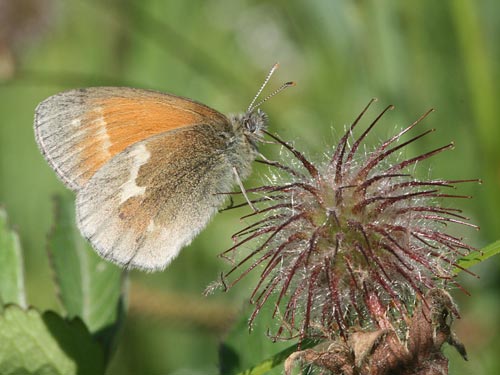
Jura, France, July 2008
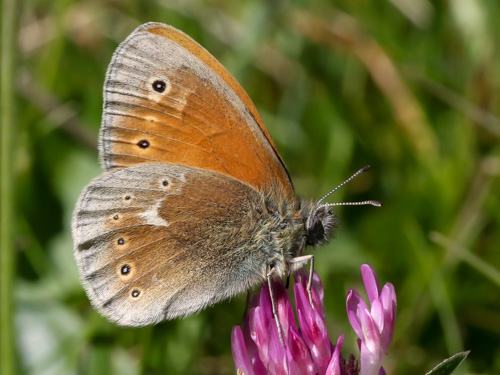
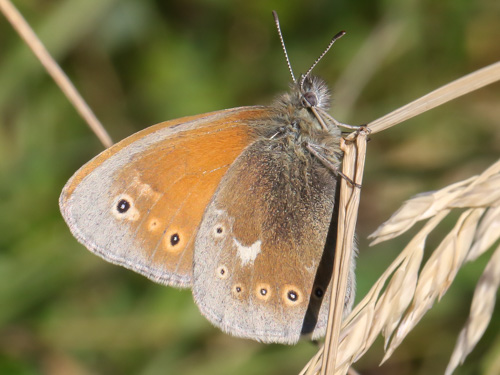
Bern, Switzerland, July 2020
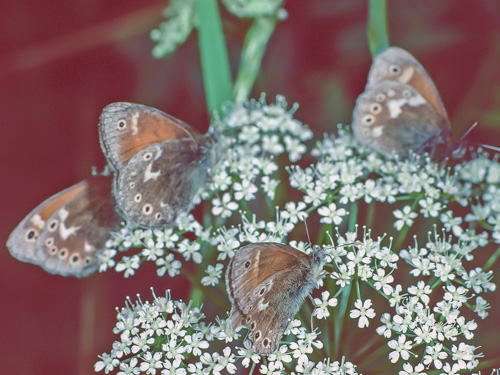
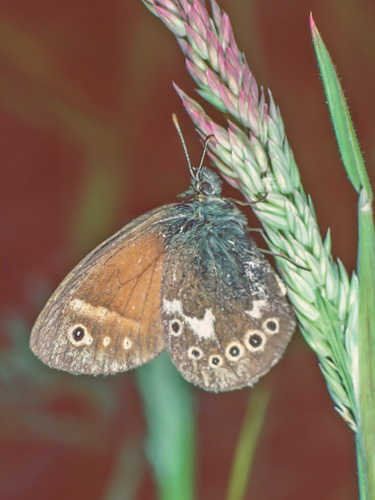
Lincolnshire, UK, June 1990
A rare butterfly in England, found early in my butterfly career.
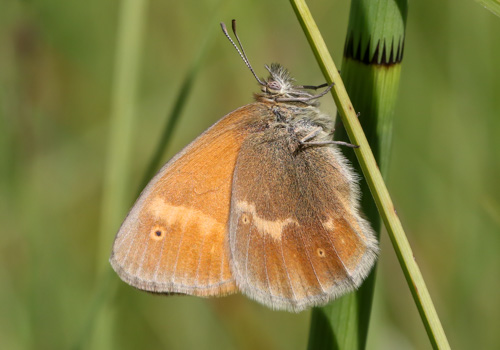
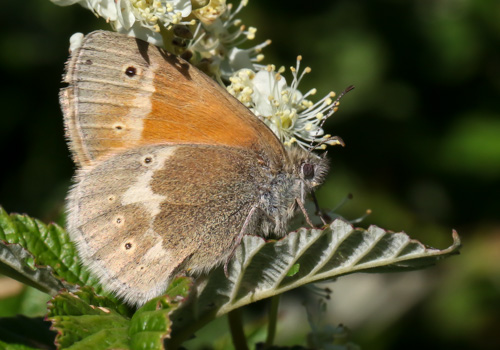
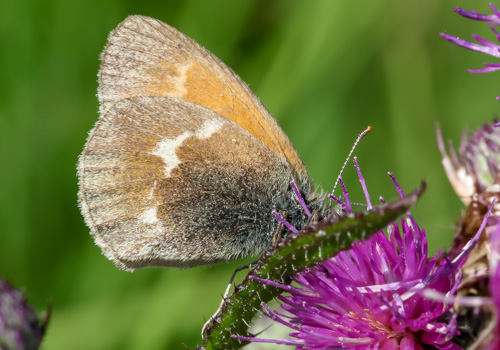
Jura, France, June 2022
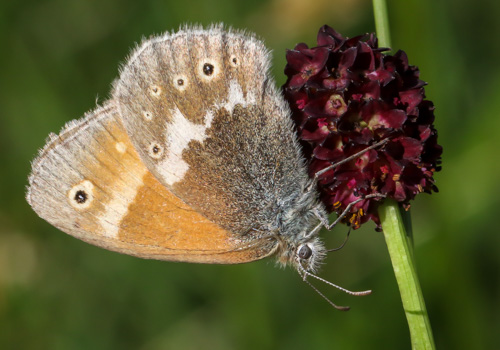
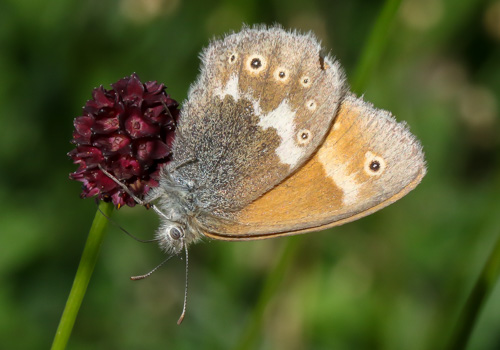
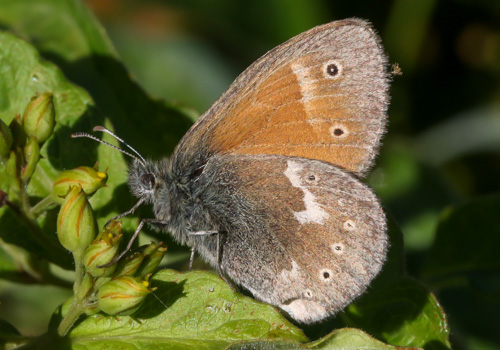
Jura, France, June 2022
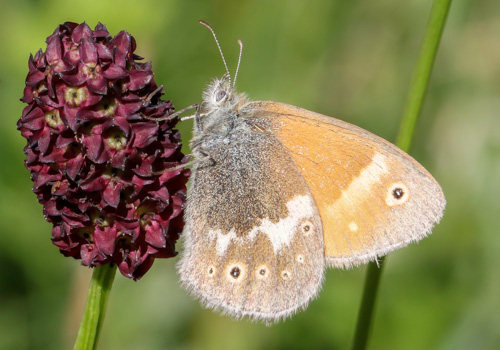
Jura, France, June 2022
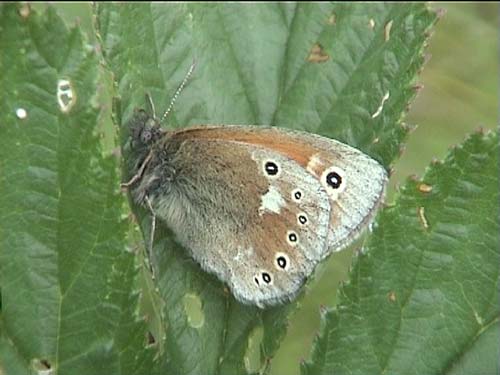
Tatra Mountains, Slovakia, July 2001
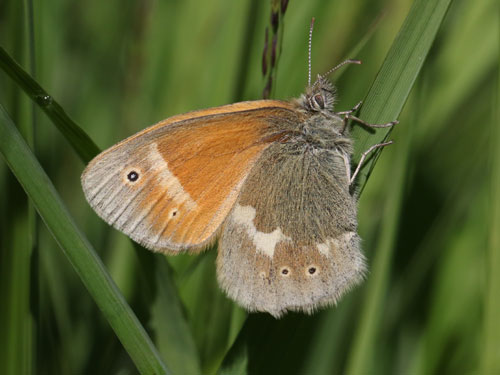
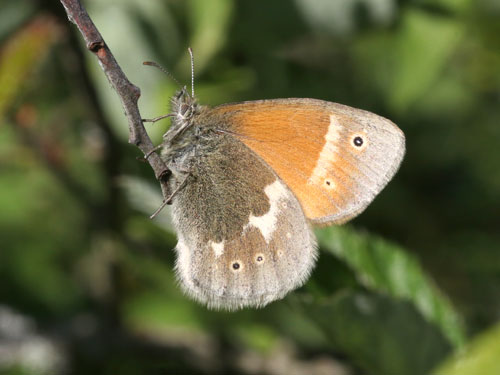
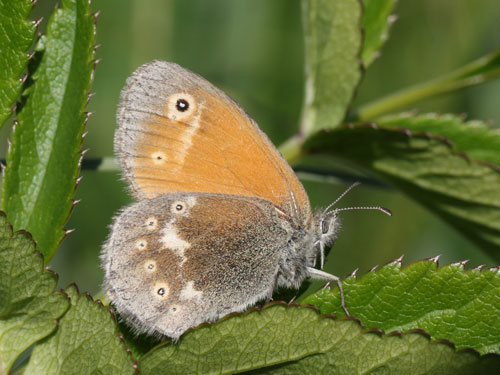
Jura, France, June 2015
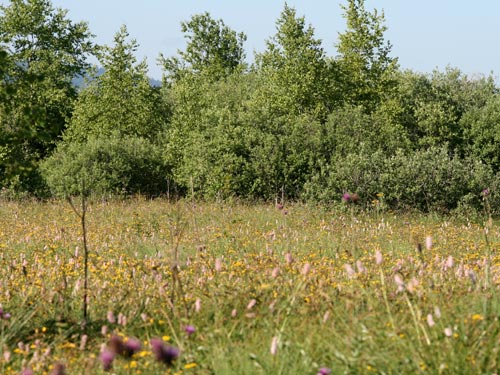
Jura, France, July 2008
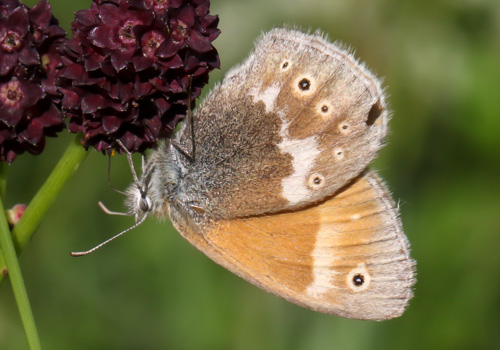
Jura, France, June 2022
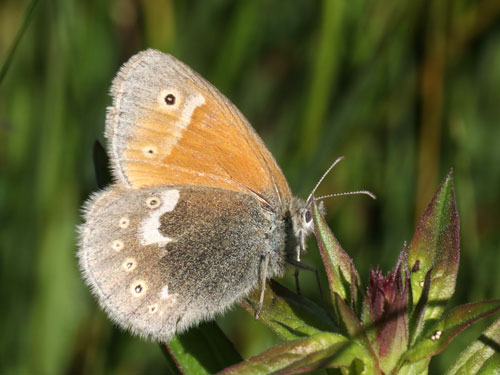
Jura, France, June 2015
